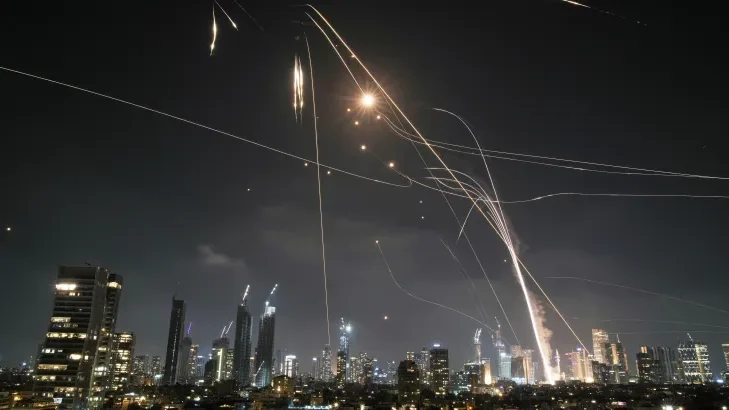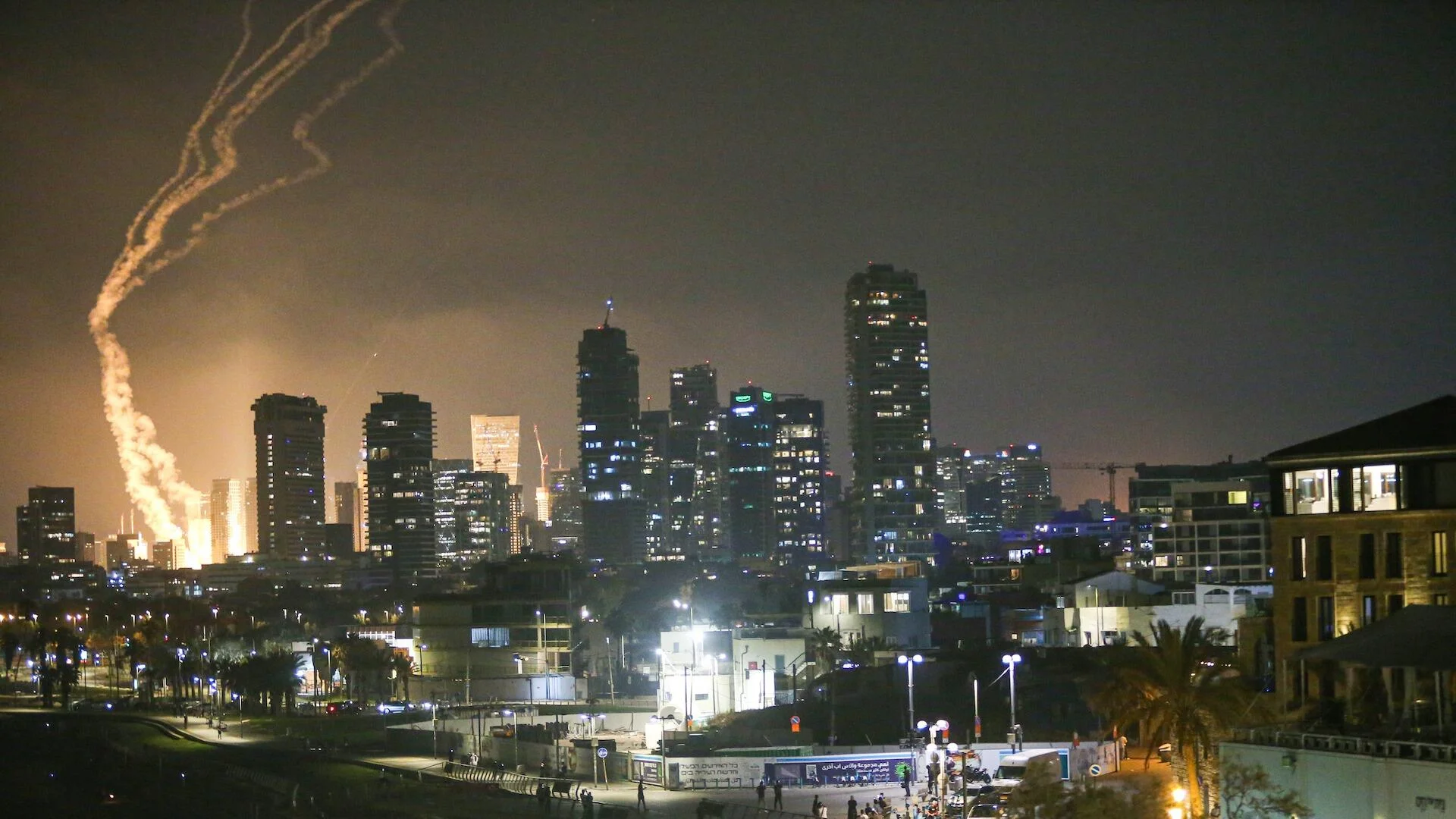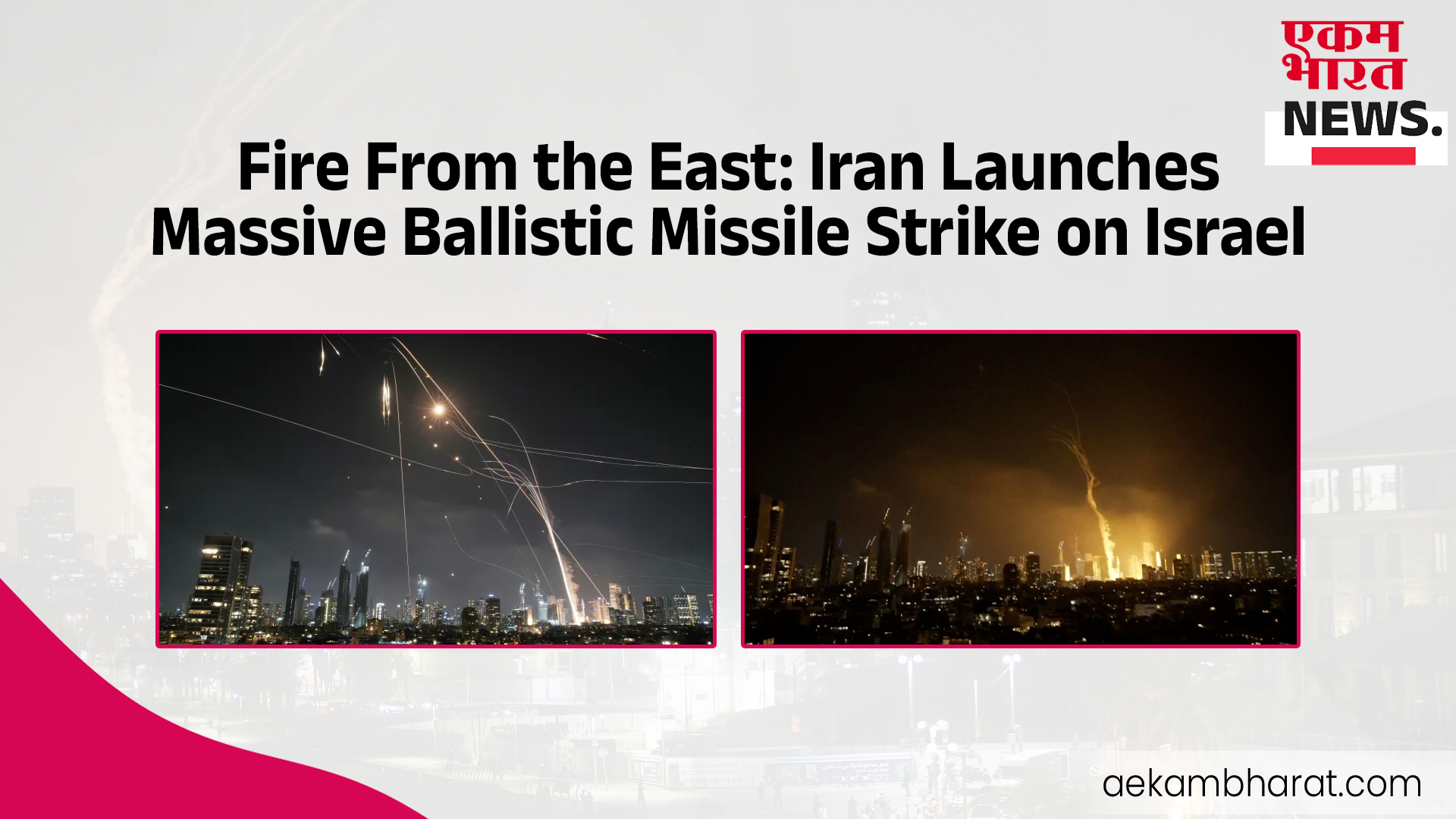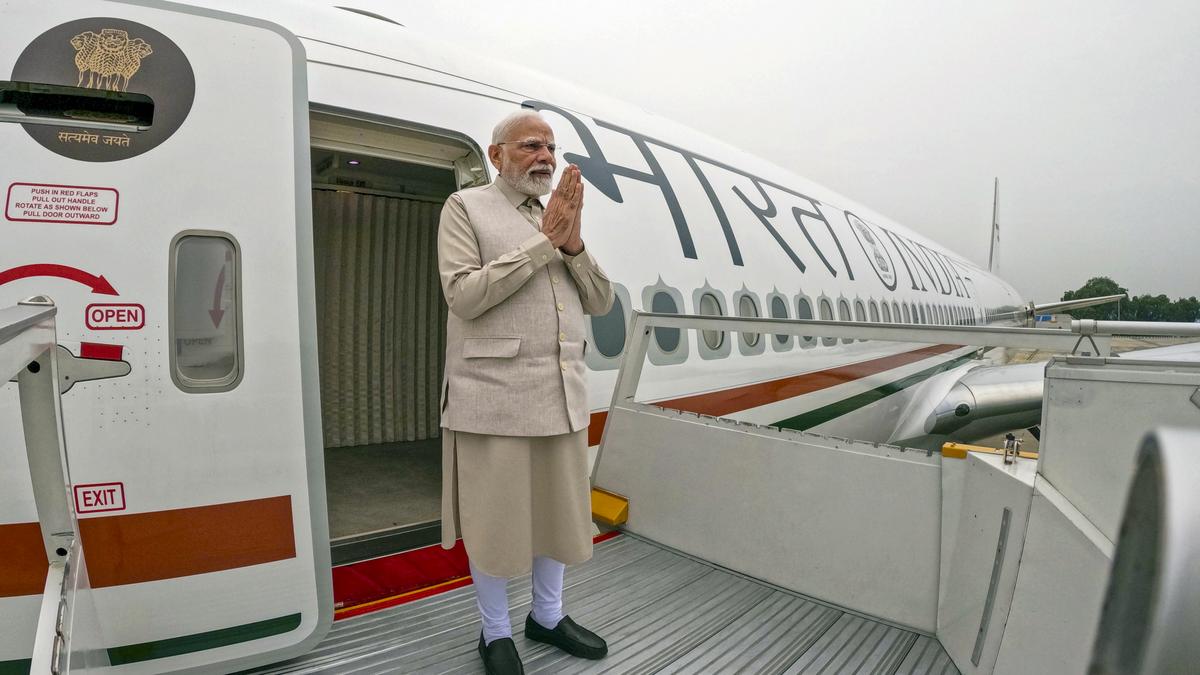Tel Aviv / Tehran : In a night that has sent shockwaves across the Middle East and beyond, Iran launched a massive, coordinated missile assault on Israel, targeting major population centers, military installations, and critical infrastructure in what Tehran calls “legitimate retaliation” for the previous Israeli airstrike on its nuclear and military assets.

Over 150 ballistic and cruise missiles were reportedly fired within a span of 40 minutes, making it the largest direct missile attack on Israeli soil in modern history.
Targets Hit: Tel Aviv, Haifa, Dimona, and More
Iran’s Islamic Revolutionary Guard Corps (IRGC) confirmed it had launched “Operation Zolfaghar’s Sword”, naming the attack after a legendary Islamic blade — a symbolic message of both vengeance and religious resolve.
Key targets confirmed or reported hit:
Tel Aviv: Multiple missile impacts reported in southern districts and near Ben Gurion International Airport. Blackouts and fires broke out across the city.
Haifa Port: Strikes targeted industrial zones, resulting in explosions at a petrochemical storage facility.
Dimona Nuclear Research Center: Reports of direct targeting with medium-range ballistic missiles. No official confirmation of damage yet.
Airbases: The Palmachim, Negev, and Hatzerim Airbases were hit with precision weapons, according to Iranian media.
Kiryat Malachi and Be’er Sheva: Faced heavy bombardment; multiple civilian and military casualties feared.

Weapon Systems Used: A Show of Iran’s Growing Arsenal
- According to IRGC statements, a range of missile platforms was employed:
- Fateh-110 and Zolfaghar short-range ballistic missiles (SRBMs)
- Shahab-3 medium-range ballistic missiles (MRBMs)
- Soumar and Ya Ali cruise missiles
Fotros and Mohajer drones for post-strike damage assessment and additional kamikaze strikes
Some missiles were reportedly launched from Iranian territory, while others were fired from militia-controlled areas in Iraq, Syria, and Yemen, indicating a broad Axis of Resistance coordination.
“We have struck the heart of the Zionist regime. This is only the beginning,” said IRGC Aerospace Commander Amir-Ali Hajizadeh on Iranian state TV.
Israeli Response: Iron Dome Overwhelmed
While Israel’s Iron Dome, David’s Sling, and Arrow-3 systems were activated across the nation, defense officials admitted that saturation tactics overwhelmed some of the defenses, allowing several missiles to bypass interception.
Over 50% interception rate confirmed by IDF, but “dozens of missiles” made impact.
Emergency alerts and sirens were heard from Tel Aviv to the Golan Heights.
Over 200 injuries and at least 45 deaths have been reported so far (unofficial tally).
Hezbollah & Hamas Join In: A Multi-Front War Begins?
In the hours following the Iranian strike:
Hezbollah launched over 300 rockets from southern Lebanon toward northern Israeli cities like Nahariya and Safed.
Hamas fired a barrage of rockets from Gaza, targeting Ashkelon, Sderot, and the outskirts of Jerusalem.
The Houthis in Yemen launched drones at Israeli naval assets in the Red Sea.
This marks the first time Iran and its regional proxies have coordinated a near-simultaneous, multi-front assault on Israel.
Intelligence Failure or Calculated Gamble?
Defense analysts question how Iran was able to launch such a large-scale retaliation so quickly, considering the damage it suffered just days ago from Israel’s Operation involving 200 fighter jets.
Possibilities include:
- Pre-positioned missile stockpiles in allied territories
- Cyber cover operations that masked the preparations
- Deep sleeper networks within Syria and Iraq providing launch logistics
Global Reaction: The World on Edge
U.S. President has called for an emergency meeting of the UN Security Council, but has reiterated Israel’s right to defend itself.
Russia and China have blamed Israel for triggering escalation with its earlier attack.
Saudi Arabia, UAE, and Egypt have gone on high military alert fearing regional fallout.
Oil prices have spiked by 18% in less than 4 hours. Global markets are plummeting.
Retaliation Promised: “This Is Not the End” – PM of Israel
Israeli Prime Minister addressed the nation from a secure underground bunker near Jerusalem:
“We have been attacked, but not defeated. The State of Israel will respond — swiftly, decisively, and without restraint. Tel Aviv may burn tonight, but Tehran will tremble tomorrow.”
Israeli Air Force squadrons have reportedly been scrambled, and multiple nuclear-capable submarines have moved into operational positions in the Persian Gulf.
Is This The Beginning of a Wider War?
With both sides now openly striking each other’s sovereign territory — not through proxies but state-to-state direct confrontation — fears of a full-scale Middle East war are growing by the minute.
Airports across Israel have been shut down. Schools closed. Reserve units mobilized.
Iran has declared a “state of sacred defense.”
What’s Next?
- Military analysts fear the conflict could:
- Draw in U.S. forces in the Gulf
- Ignite Lebanon and Iraq into full war zones
- Prompt cyberattacks on Western targets
- Spread instability to India, Afghanistan, and Central Asia
Final Word: The Fuse Is Lit
Tonight, the fragile quiet of deterrence that once defined the Middle East is gone. The missiles have flown. The cities have burned. The game has changed.
Operation Rising Lion met the Sword of Zolfaghar. And the world holds its breath.




